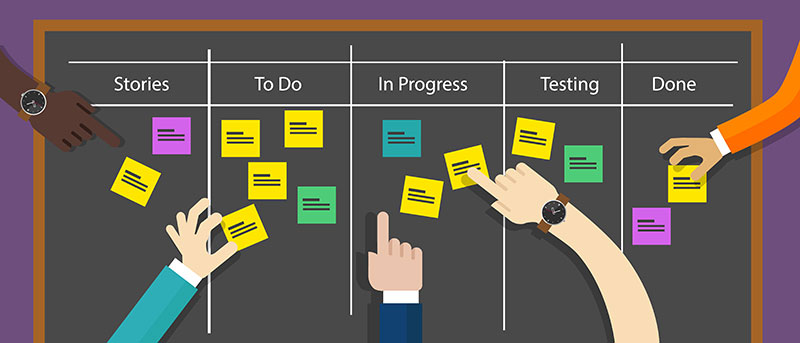Why Becoming an Agile Organization Is Your Key to Competitive Success

I overheard a TV commercial the other day about some enterprise technology provider (the kind of commercial you only get if you happen to be watching CNBC or Fox Business News), and the voiceover said “IT has finally become a business function, it’s not just a technology function anymore.”

Of course it has. With technology as a key competitive component instead of just a back-office function, IT has become a critical player in the boardroom.
But what has elevated IT to its new position in the upper echelons of today’s enterprise? Sure, the widespread adoption of internet technologies, mobile, analytics and cloud computing have all contributed; but I believe the growth and widespread adoption of the Agile and DevOps methodology has become one of the principal enablers for this change.
Why Agile Has Boosted IT’s Role In The Business
First, a little definition of these terms (with apologies to those Agilists who read the Nearshore blog). Although used somewhat interchangeably, they are distinct.
Agile: The agile manifesto is pretty self-explanatory, but for my purposes here I want to focus on two of the principles: “Working software over comprehensive documentation,” and: “Responding to change over following a plan.”
These point to one of the biggest reasons why becoming an agile organization is so appealing to business: working software (as opposed to the plans to build working software) is what brings ROI. It’s what helps your firm deliver business value now instead of in six months or three years.
And “responding to change” is what we need to do in our constantly changing, technology-driven competitive landscape.
DevOps: According to Jaime Palacios, Application Development & DevOps Practice Director at Softtek:
“DevOps is a philosophy that has been established to streamline the process through which business-value gets released and how real feedback gets captured so a virtuous cycle can be built around it.”
The emphasis on collaboration, user stories, backlogs, development sprints and parallel Q&A means you can deliver working software, or “products” as we call them, in much quicker time and at much higher quality than traditional waterfall development methodologies.
And what does this mean for the business? It means you can see ROI almost immediately.
For example, a restaurant chain can deliver an app that allows patrons to put themselves on to a waiting list during busy periods before they even get to the restaurant, instead of waiting 45 minutes for your table. The app will help them get ahead of a competitor that might still use a manual process.
Or as we did for a global entertainment company, you could deliver a special video application to various countries and languages in quick succession, taking into consideration the double-byte requirements for some languages, or the cultural or censorship requirements of other countries, in order to match movie release schedules.
SAFe and Release Trains: Key to Business Agile
But what has really finally brought the Agile methodology out of the backroom and into the boardroom is the migration of the SCRUM concept into a company’s upper echelons.
With the development of the Scaled Agile Framework (SAFe) and Release Trains, around which SAFe program teams are organized, there is finally a documented, formal vehicle to enable business and technology representatives to collaborate with each other.
SAFe teams typically consist of between 50-125 individuals (although we’ve worked with teams of between150-200), and they break down traditional functional silos.
During a Release Train kickoff meeting, for example, all of the teams are together, working out on their stories. They are physically in the same room as other teams on whom they have dependencies.
To work out your dependencies, just walk over to the table where they’re sitting and work out your requirements, your priorities, what you need and when you need it done.
And you can have that conversation in person - not in an email thread or an online chat.
How to Become 'The Agile Organization'
So if you’re excited about the concept, but you’re not sure how to proceed or how to make it work in your organization, here is an easy way to make it work: start out with an agile pilot project.
And when I say pilot, we’re taking about a real application that’s actually going to a production environment, not a wire frame of a nonfunctional application.
The goals are two-fold:
- Choose a project that solves a real business problem, but provides low risk. We helped a hardware technology company implement a pilot project to release a “product” related to their HR system.
- Set up the correct processes from the beginning to generate trust and credibility with the business. Prove that it can work in your organization while working out the kinks, before adopting it on a broader scale.
I’d like to emphasize the importance of the last point. You really need to prove that Agile is doable in your organization, and that you can use the lessons learned to fine-tune your Agile strategy going forward.
Conclusion
“Innovation at the speed of business” is another term coined by a large IT company that probably advertises on CNBC. It refers to the need to act fast to meet challenges and opportunities in our fast-paced, technology fueled economy.
But how can your firm actually react quickly while ensuring everybody at your company is on the same page?
I believe that Agile and DevOps Implementation are the killer methodologies that can finally help your company transcend the traditional IT / business silos and drive the type of rapid, cross-functional and cross-departmental collaboration that drives real business value.
To find out more about Softtek’s Agile services, click here.


